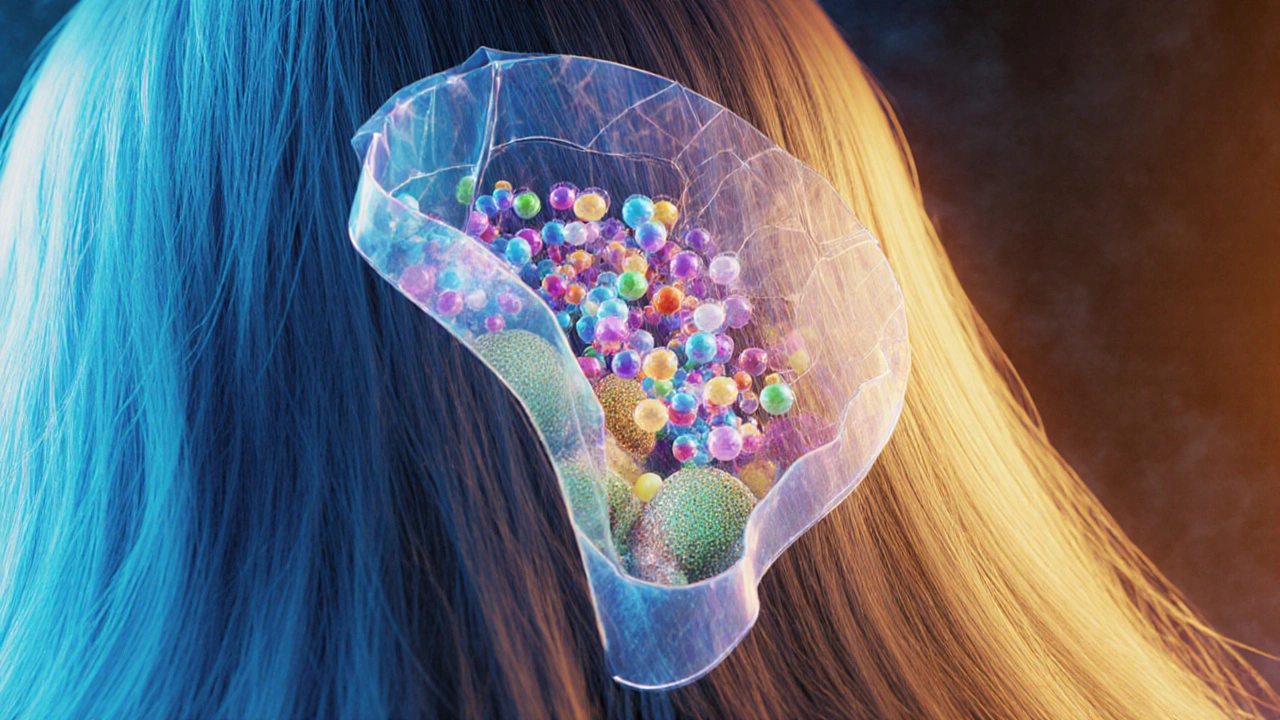When you pick up a box of hair color, you’re not just buying a shade—you’re buying a chemical reaction. hair dye chemistry, the science behind how pigments penetrate and alter hair structure. Also known as hair color formulation, it’s what determines whether your color lasts, fades, or damages your strands. Most permanent dyes rely on ammonia to open the hair cuticle and hydrogen peroxide to strip natural pigment so new color can settle in. But not all dyes work this way. Some brands skip ammonia entirely, using alternative alkalizers like ethanolamine. Others avoid peroxide altogether, relying on deposit-only formulas that coat the hair instead of changing it from within.
One of the biggest hidden players in hair dye is PPD, para-phenylenediamine, a common ingredient in dark hair colors that triggers allergic reactions in many people. Also known as paraphenylenediamine, it’s linked to scalp burns, swelling, and long-term sensitivity. That’s why so many people with Indian hair or sensitive skin turn to henna hair color, a natural alternative made from ground leaves that stains hair without penetrating the cortex. It doesn’t lighten, but it covers grey gently and adds shine over time. Then there’s semi-permanent hair color, a middle ground that deposits pigment without harsh developers, fading gradually without root lines. These options avoid the chemical shock of permanent dye, making them ideal for people who want color without the damage.
It’s not just about what’s in the bottle—it’s about how it interacts with your hair’s natural structure. Thin, porous, or previously colored hair absorbs dye differently than thick, virgin hair. That’s why box dyes often look patchy or unnatural on natural hair. Mixing dye with conditioner might seem like a smart way to tone down the strength, but unless it’s a deposit-only formula, you’re just diluting the color and risking uneven results. The science is clear: permanent dye and conditioner don’t play well together. But conditioner can help protect hair before dyeing, or nourish it after.
What you’ll find in the posts below isn’t just a list of products. It’s a breakdown of real experiences—why brown box dye sometimes makes hair look grey, how henna works for grey coverage, what happens when you mix dye with conditioner, and which brands actually deliver safe, lasting color without burning your scalp. Whether you’re trying to cover grey naturally, avoid allergic reactions, or just understand why your color faded so fast, these guides cut through the marketing and show you what the chemistry really means for your hair.

Ammonia in hair dye opens the hair cuticle to let color penetrate deeply, making it essential for permanent, high-lift results. But it's not the only option - ammonia-free formulas exist, with trade-offs in coverage and longevity.